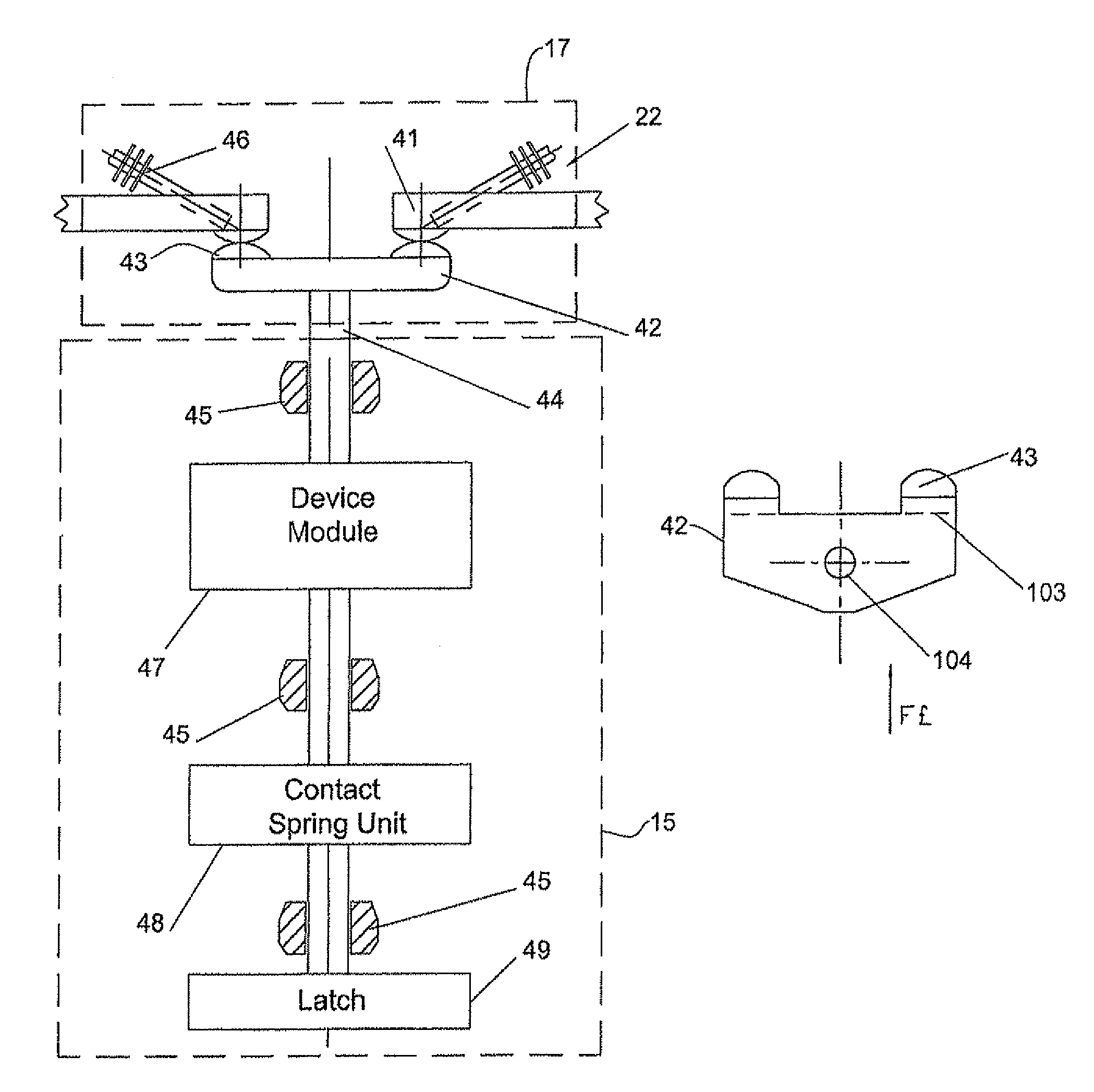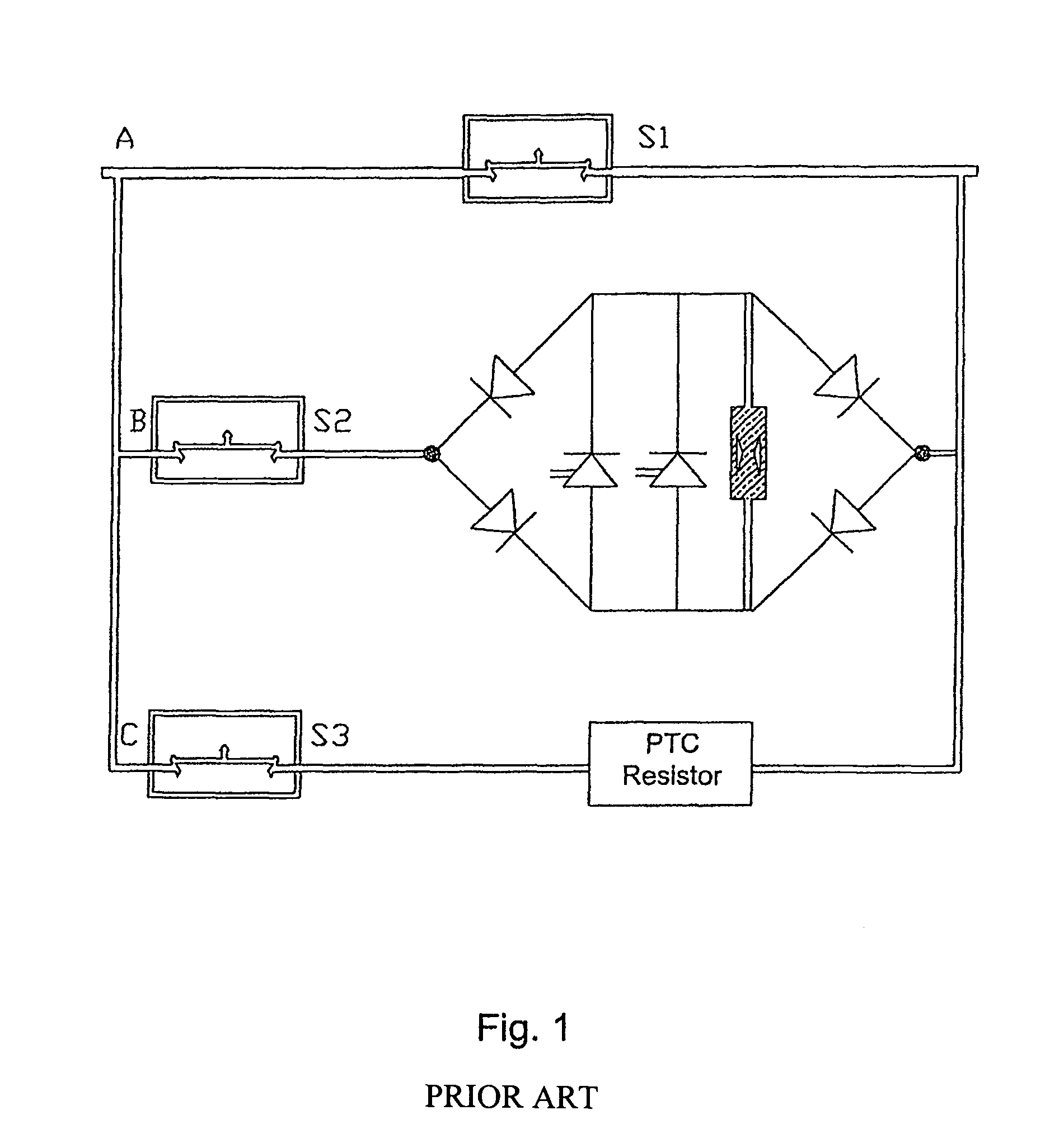Medium-voltage circuit-breaker
a circuit breaker and medium voltage technology, applied in the direction of self-interruptors, emergency protective arrangements for limiting excess voltage/current, high-tension/heavy-dress switches, etc., can solve the problems of high cost, heavy erosion of contact materials, and inevitable faults of electric power systems. , to achieve the effect of fast acting and low cos
- Summary
- Abstract
- Description
- Claims
- Application Information
AI Technical Summary
Benefits of technology
Problems solved by technology
Method used
Image
Examples
Embodiment Construction
[0038]FIG. 2 is a circuit diagram showing one pole 10 of a multi-phrase circuit breaker according to an embodiment of the invention. Generally, an n-pole medium-voltage AC circuit-breaker has “n” identical independent switches, i.e. one for each phase. For example, a three-pole switch includes three equal independent phases. A current sensor 11 (CS) is connected in the AC line 12 for measuring the AC line current and feeding a signal indicative thereof to a sensor electronic board (SEB) 13. The SEB analyses the (CS) signal for fault conditions detection and in case of a fault provides a trigger signal to a pulse power unit (PPU) 14 for operating a fast acting switching mechanism (FAM) 15 that opens contacts 16 of a contactor 17 connected in the AC line. The SEB 13 also feeds the trigger signal to a thyristor bridge 18 that is coupled across the contactor 17 and that comprises two parallel branches BC1 and BC2 each having multiple series-connected thyristors 19, the thyristors in eac...
PUM
 Login to View More
Login to View More Abstract
Description
Claims
Application Information
 Login to View More
Login to View More - R&D
- Intellectual Property
- Life Sciences
- Materials
- Tech Scout
- Unparalleled Data Quality
- Higher Quality Content
- 60% Fewer Hallucinations
Browse by: Latest US Patents, China's latest patents, Technical Efficacy Thesaurus, Application Domain, Technology Topic, Popular Technical Reports.
© 2025 PatSnap. All rights reserved.Legal|Privacy policy|Modern Slavery Act Transparency Statement|Sitemap|About US| Contact US: help@patsnap.com



